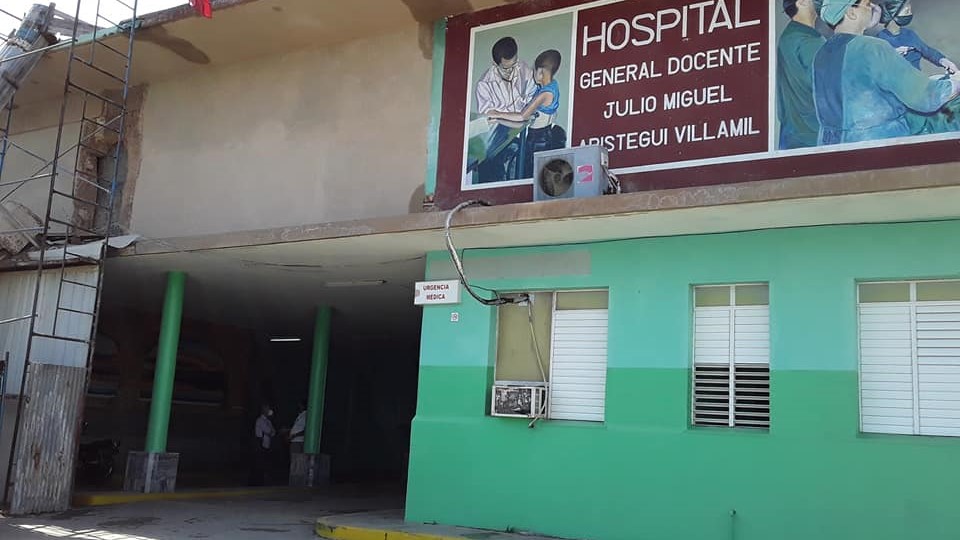Between April and the current month of July there has been a recurrent phenomenon in Cuba regarding the escalation of the Covid-19 pandemic: the most intense and deadly outbreaks have been in Matanzas.
When in April Dr. María Guadalupe Guzmán, head of the Research & Diagnosis Center at the Pedro Kourí Institute of Tropical Medicine (IPK) acknowledged the existence of an outbreak of a lethal disease in the Matanzas municipality of Jagüey Grande, she said that situation was "being studied".
After various unofficial sources reported the sudden death of several people in Torriente, a town near Jagüey, the health authorities first hurried to deny the news and later to report that the "genetic variant reported in South Africa" was circulating in that area of Matanzas.
Although Guzmán recognized then that the growth in cases and deaths from the disease in those weeks was due to the presence of five genetic variants and six mutational patterns of the new coronavirus, she said that the United Kingdom strain was also present in Cuba, though only detected in only three people, as well as that from California.
The first, the specialist recognized at that time, affected Matanzas municipalities like Jagüey Grande and Colón, while the third was active in Cárdenas.
Under these circumstances, however, the expansion of Covid-19 cases in Matanzas paled to what was going on all across Cuba since mid-June, with record numbers for the entire pandemic in Cuba, local hospitals being overwhelmed, and the sending of emergency brigades from Havana to try to help the overburdened personnel working there.
The current situation features a factor to which the authorities attribute the dizzying rise in infections: the circulation of the Delta and Delta Plus variants, which are between 40 and 50% more contagious than the previous ones known. After being reported for the first time in India, they have expanded into dozens of countries.
Unlike what happened in April, the authorities have not specified when this variant was detected in Cuba for the first time, how many of the Covid-19 patients diagnosed in Matanzas suffer from it, or where it entered the country.
An examination of what the official media has published in that territory, however, provides some strong clues. At a government meeting on Wednesday it was reported that Cárdenas, the municipality where the Varadero resort is located, has an incidence rate of more than 1,500 positive cases per 100,000 inhabitants.
According to Danailys Ménendez Castanedo, Director of the Julio Miguel Aristegui Hospital in that municipality, the facility receives between 80 and 100 patients adults daily for Acute Respiratory Infections consultations, while some 60 are Pediatric consultations. Antigen tests reveal that most of them are positive, specified the official newspaper Girón.
Of the 1,327 cases reported by the Cuban Ministry of Public Health (MINSAP), on Thursday in Matanzas, Cárdenas accounted for 230. In just two weeks, in that territory they surpassed 2,000 infections. On the last day the figures were even worse in Matanzas, with 337; and Colón, with 276.
Hundreds of tourism workers who perform various functions in Varadero live in these areas. Since April hundreds of Russian tourists have flown to this area, the island's main sun and beach destination. And, since the beginning of June the Eurasian country has seen infections and deaths skyrocket. The Russian authorities, like the Cuban ones, put the escalation of the pandemic down to the expansion of the Delta variant.
Although there are no official figures that explain the relationship between one phenomenon and another, last week Matanzas authorities acknowledged in a report on the worsening of the health crisis that the causes of the current situation include Russian tourists and Cuban travelers who arrived infected from abroad, tourism and airport workers who fell ill with the virus, violations of the health protocols established by the authorities, and the shortage of hospital beds.
According to the official report, epidemiologists in Matanzas detected 54 sick tourism workers in May and 110 in June. These, in turn, infected 283 people in the communities where they live.
32 workers from the Juan Gualberto Gómez International Airport were also positive, all of them after the flights began to arrive from Russia, infecting 97 people in their communities.
In addition, there are hot spots among the petroleum workers in the province, spreading infections in Cárdenas, Martí, Perico and Unión de Reyes.
That report confirmed that the worsening of the pandemic has largely been a result of arrivals from abroad, despite the fact that the authorities have claimed that they have created conditions to prevent infections from occurring.
Since the Government reopened airports for travel in November 2020, Cuba has suffered an escalation in positive cases that led to June being the month with the highest number of infections and deaths from the pandemic, with 50,622 and 337, respectively.
Since the beginning of July those numbers have only risen.
When presenting the report Matanzas Governor Mario Sabines admitted that "the third outbreak, with the South African strain, surprised us, raising the province's rate to astronomical figures: 1,062. In just a few days this fourth outbreak has multiplied the number of cases. The numbers for the third, which began in Jagüey, seemed very high to us, but they are nothing compared to what is happening now. Not to mention that the outbreaks are coming in faster succession."
